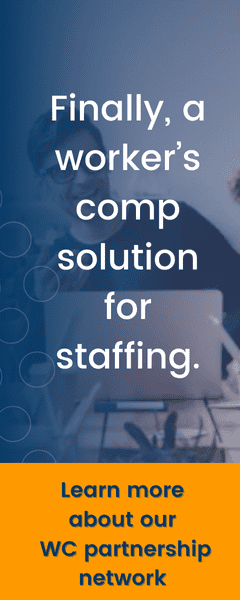7 Common Issues & Challenges Facing Staffing Agencies

Last time updated: October 23, 2025

Staffing firms face change constantly: new technology, a limited supply of talent, economic uncertainty, diversity and inclusion incentives, the push to work from home, high turnover rate, etc. We hear all about these issues from our staffing firm clients, so here are some of the biggest challenges that staffing professionals firms and hiring managers face year to year.
We recently sat down with the Staffing Industry Analysts (SIA) editorial staff to talk about those pain points. In this blog, we will summarize the key points and offer our thoughts about staffing problems and the industry specific pain points that staffing firms go through as well as how to craft your recruiting strategies to manage them.
What are the biggest challenges in the recruitment industry?
1. CANDIDATE-DRIVEN MARKET
Right now in the US when it comes to labor, the supply and demand is simple: There are fewer quality candidates available than open jobs. We see it all the way from high-end engineering or technology recruitment firms to those filling blue-collar jobs. There just aren’t enough folks with the right skills and expeience to fill all the open positions. Additionally, candidates have more control than ever when it comes to technology that connects them with potential jobs. This includes online marketplaces, human cloud work and the tools that facilitate communication between the traditional staffing firms and their database of candidates.
All this to say, candidates hold all the cards right now, which is a change from the past. If you’re not focused on creating the best experience possible for your candidates, they will take their business elsewhere.
What “candidate-first” means today goes far beyond basic engagement. Modern job seekers expect fast communication, transparency around compensation, and flexible work arrangements like remote or hybrid options. If you’re not offering these, your competition is.
Here are a few ways to improve the candidate experience at every touchpoint:
- Job Ads – Keep them clear, concise, and upfront about pay, benefits, and flexibility.
- Application Process – Make it short and mobile-friendly. Lengthy applications are a top reason candidates drop off.
- Onboarding – Communicate frequently, make paperwork digital, and give them a clear view of what to expect on day one
To compete with job boards and staffing marketplaces, don’t try to out-tech them or out-human them. Leverage your personal relationships, niche expertise, and high-touch service. Use automation to streamline your internal processes, but keep candidate interactions warm and responsive. Build a strong employer brand that prioritizes trust and transparency, and you’ll win over candidates that generic platforms can’t hold onto.
2. MSP TRENDS
One thing we have been hearing a lot lately from our clients is what may be the leading edge of another trend: The pendulum swinging away from MSPs while unemployment remains low and few local employees are available. Some of our midsize clients have told us that a large client that used to depend solely on an MSP has approached them directly. Namely, because of their expertise in the local market and good contacts in the area.
To capitalize on this trend, consider reaching out to larger clients who may be feeling the pain of shortage of employees. You can sell this as a unique advantage over a more generalized MSP approach.
What are the signs a client may be shifting away from their MSP?
- Increased communication from internal hiring managers instead of the MSP.
- Requests for niche, local talent that the MSP is struggling to fulfill.
- Frustration with slow candidate pipelines or impersonal processes.
- Openness to meeting with staffing partners independently of their program.
How to market your local expertise and candidate relationships:
- Highlight your track record of quick, successful placements in the area.
- Emphasize your deep network of passive and hard-to-reach candidates.
- Share testimonials or case studies that showcase your ability to fill tough roles locally.
- Position yourself as a partner who understands both the business landscape and the people behind it.
Tips for reaching out directly to enterprise clients:
- Do your homework: research their hiring needs, pain points, and any gaps in MSP performance.
- Craft a message that focuses on value, not just volume. Show how you can deliver faster, better, more personal service.
- Leverage your existing relationships: if someone you’ve placed is working there, that’s a warm lead.
- Don’t bash the MSP. Just position yourself as the local advantage they’re currently missing.
3. TECHNOLOGY
Figuring out which technology can help you make more placements that are going to stick is an overwhelming challenge. But it is also one you need to spend time on this year, because if you don’t, you’ll soon be left behind.
Most of our clients are small to midsize firms who grew up as traditional staffing firms and are now trying to figure out how to use online sources of candidates such as Indeed or LinkedIn. It’s like everyone has a database of 2 million candidates — but now they need the ability to query and qualify the candidate pool for the right fit.
What tech is essential today? At minimum, you need:
- An ATS (Applicant Tracking System) to manage candidates,
- A CRM to track and nurture client relationships,
- Sourcing automation tools to speed up outreach, and
- VMS integrations to streamline job order intake from large clients.
Evaluate ROI carefully. Look at what your team actually uses versus what sits unused. If it’s not supporting productivity or placements, it’s time to reassess.
Start with process clarity. Before buying new tools, map out your workflows. Knowing where your bottlenecks and inefficiencies lie will help you choose technology that solves real problems—not just adds complexity.
4. “GHOSTING”
You may have heard this term in reference to dating apps, but it’s a problem during the interview and hiring process too. We’re talking about employee no-shows, or “ghosting” — people starting assignments and then leaving after a day or two. Why is that? They know there are other jobs waiting for them. And it is very costly for the staffing firm. Not only does it hurt your relationship with your client, you also lose the investment you made finding, recruiting and training the worker.
Ghosting in the current COVID-19 staffing market has become an even bigger issue. According to a study conducted by Indeed, “it’s become clear that the disappearing act is no longer quite so one-sided: more employers are now ghosting job seekers, too.”
Unfortunately, there is not a whole lot you can do about it other than try your best to do your due diligence and match your candidate’s expectations.
That said, here are a few practical strategies to reduce ghosting:
- Use texting and automated reminders to keep candidates engaged before start dates.
- Do quick check-ins after interviews and day-one starts to catch red flags early.
- Strengthen your screening process to weed out candidates with poor follow-through.
Educate your clients about ghosting trends and set realistic expectations. Share data like ghosting rates by role or industry, and how you’re working to minimize it.
Finally, build candidate loyalty through consistent communication, transparency, and treating candidates like people, not just placements. The more trust you build, the less likely they are to disappear.
5. OWNER TIME PRESSURE
Staffing firms owners can easily become bogged down by the guts of the business — spending time on back-office functions such as invoicing, payroll and tax, or pulling information from various systems to get basic metrics such as fill rate and time to fill for recruiters. It’s painful and can take hours. Plus, none of those functions drives your revenue.
Consider finding partners or investing in systems that are more efficient. Owners’ time is better spent with the recruiters and salespeople — coaching, developing and measuring — than on back-office work.
The real cost of owner involvement in back-office tasks is more than just time. It’s lost revenue opportunities, slower growth, and increased burnout. When you’re stuck in the weeds, you can’t focus on strategy or scaling.
Top back-office functions to outsource first include:
- Payroll and invoicing – time-consuming, error-prone, and essential to cash flow.
- Compliance and tax filings – complex and high-risk if done incorrectly.
Freeing up your time allows you to focus on revenue-generating activities like building client relationships, improving recruiter performance, and making key business decisions. It also helps prevent burnout, making it easier to lead with energy and vision.
6. SPECIALIZATION
In a highly competitive environment, one thing staffing firms can do to help themselves improve time to hire or “speed to candidate” is to specialize. If you have a specialized niche, what gives you speed is your expertise rather than the technology you’re using. Although technology can help everyone, specialty players have more leeway.
If you have the best database for a very specific sort of NICU nurse, let’s say, you are likely to be able to survive even if you don’t have every hot, new tool. You know how to find the candidates with these skills and experience, qualify them, and the hospitals that need those folks are going to call you. At the other end of the spectrum, if you’re placing semi-skilled labor, it’s more about how fast you can get them to show up and get the drug tests completed. That’s hard to do when you’re leaving voicemails.
Specialization not only leads to faster placements—it also drives higher margins. Clients are willing to pay more for partners who truly understand their talent needs and can deliver quickly.
Examples of niche markets that benefit from specialization include:
- IT contractors with hard-to-find technical skills
- Travel nurses for high-demand locations
- Skilled trades like electricians, welders, and HVAC techs
To market your niche expertise, showcase your deep talent pipeline, relevant success stories, and understanding of client pain points. On the candidate side, position yourself as the go-to recruiter for their specific career path, someone who knows their industry and speaks their language.
7. FINANCIAL UNCERTAINTY
Rising interest rates, historically low unemployment, a predicted slowdown in GDP, and possible trade conflicts are all factors that are contributing to an economically uncertain future with a possible recession on the horizon.
A big part of managing financial survival in a recession is doing what you would always do, but doing it better. For example, analytics are more crucial during a recession. Which recruiters, which offices, and which vertical lines are generating the most profit? You may need to tighten your belt, and you need to know when and where to tighten.
Why do economic shifts hit staffing so fast? Because staffing is often one of the first expenses companies cut during downturns. Recession, inflation, or a client bankruptcy can lead to immediate cancellations, delayed payments, or fewer job orders, making financial stability critical.
To build financial resilience, consider:
- Diversifying your client base to avoid overdependence on one sector,
- Building cash reserves to cover lean periods, and
- Reducing fixed costs to improve flexibility.
Real-time analytics can help you spot which clients, industries, and recruiters are the most profitable—allowing you to double down on what’s working and cut what’s not.
8. BURNOUT AND LEADERSHIP BANDWIDTH
Staffing firm owners wear a lot of hats—but trying to be the COO, CFO, Head of Sales, and top recruiter all at once isn’t sustainable. As your firm grows, so do the demands on your time, and spreading yourself too thin can stall progress fast.
Common signs of leadership burnout include:
- Missed growth targets or stalled momentum
- High employee turnover or lack of team engagement
- Chronic indecision or delay in major decisions
To protect your mental bandwidth, consider:
- Strategic delegation: empower key team members to own outcomes
- Leadership coaching to develop your decision-making and vision
- Fractional support (e.g. fractional CFO, marketing help) to ease the load without full-time hires
Your business can’t grow if you’re always stuck in the weeds.
How to Prioritize and Address These Challenges
With so many competing challenges—financial uncertainty, ghosting, tech decisions, and more, it’s easy to focus on what’s loudest instead of what matters most.
A better approach? Prioritize each challenge by:
- Revenue impact: Will solving this problem drive revenue?
- Urgency: Is it hurting the business now or soon?
- Solvability: Do you have the tools or support to take action now?
Then, use quarterly OKRs (Objectives and Key Results) to structure your efforts. Instead of trying to fix everything at once, set clear, measurable goals each quarter that align with your bigger strategy.
Most importantly, focus your energy where you have the greatest leverage, not just what’s most urgent. Growth comes from working on the business, not just in it.
Resources to Help You Overcome Staffing Challenges
If you’re navigating any of the challenges above, you don’t have to do it alone. Here are a few helpful resources:
We also recommend downloading our free resource:
Staffing Firm Survival Playbook – A guide to tackling the most common growth blockers in staffing.
Ready to talk it through? Schedule a free consultation with the team at Advance to explore tailored financial support, back office help, and growth planning strategies.
You’re Not Alone in These Challenges
These are just a few of the many stresses and issues that staffing firms face daily. If your staffing firm is facing these problems but wanting to grow, we can help. Contact us anytime for a free consultation about our specialized payroll funding and back office services.
Every successful staffing owner has faced these challenges — the difference is whether they tackled them reactively or proactively. With the right partners, systems, and financial support, you can turn challenges into opportunities. Advance Partners has helped hundreds of staffing firms navigate uncertain terrain. If you’re ready to scale smarter, we’re here to help.
FAQs: Solving Common Staffing Owner Challenges
How can staffing firms improve cash flow during uncertain times?
Start by tightening payment terms, reducing fixed expenses, and building cash reserves. Consider payroll funding or back-office support to stabilize cash flow without delaying growth. Real-time financial insights can also help you stay proactive.
What’s the best way to reduce candidate ghosting?
Keep communication consistent. Use texting, automated reminders, and check-ins before and after start dates. Improve screening processes and build trust by setting clear expectations. Educate clients about ghosting trends and share your KPIs.
When should a staffing firm consider specializing?
If your team has deep industry knowledge or strong relationships in a niche, specialization can help you place faster and charge higher margins. It’s especially valuable when competing against generalist firms or national MSPs.
How can I get out of daily back-office work as an owner?
Start by identifying the most time-consuming tasks like payroll, invoicing, or compliance—and outsource or automate them. Delegate internal responsibilities and consider bringing in fractional experts. Freeing up your time lets you focus on growth and strategy.
What tech tools are most important for staffing success?
At minimum, you need an ATS (Applicant Tracking System), CRM (Customer Relationship Management), sourcing automation tools, and VMS integrations (if you serve large clients). Choose tools that fit your process and are actively used, not just nice to have.
Up Next















